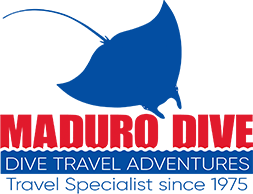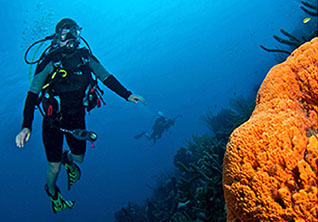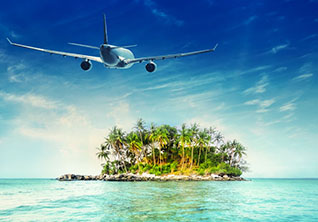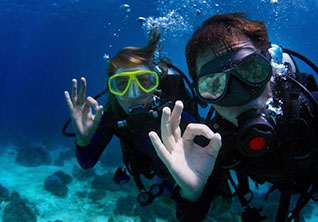Tobago: Drifting Along with Macros and Pelagics
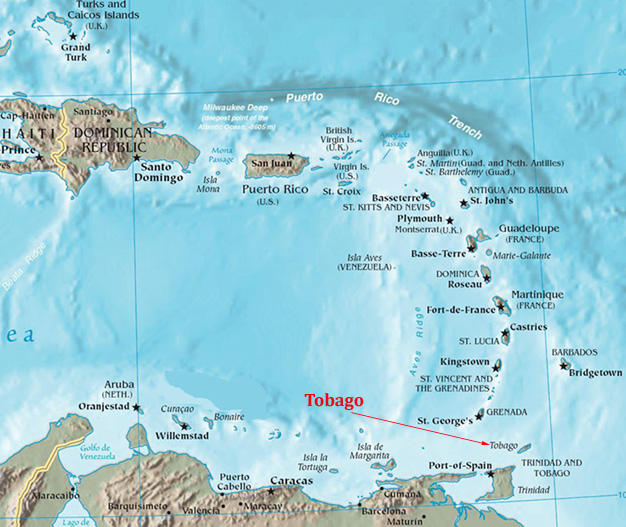
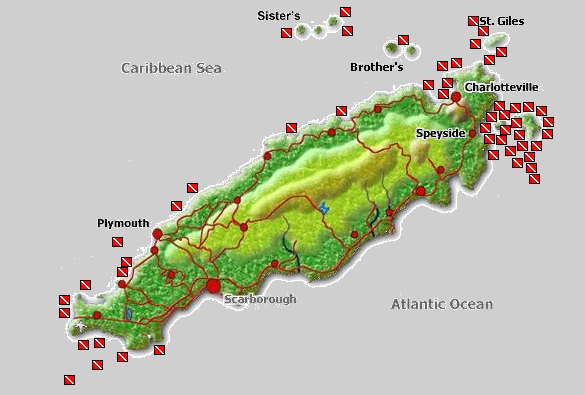
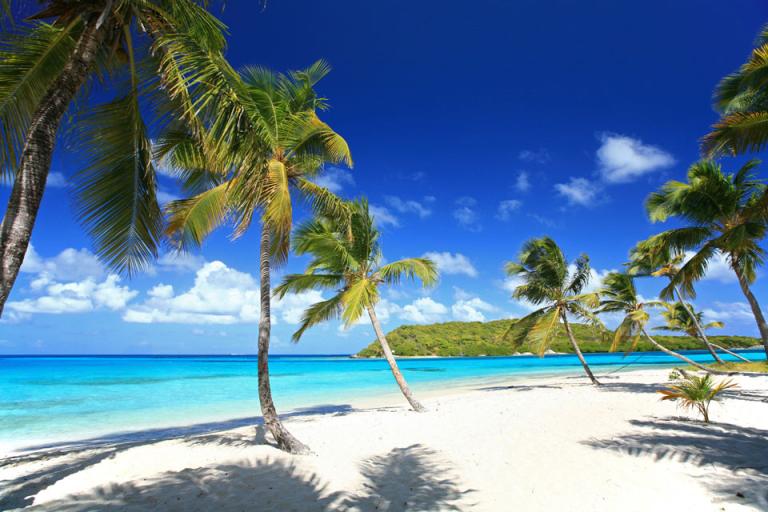
From the smallest seahorse to an abundance of majestic sized mantas to gigantic groupers to perhaps the world’s largest brain coral, Tobago has something to offer just about every diver. It’s not always this black and white when you are talking about a dive destination. That is unless you are talking about Tobago’s black sand beaches being on the Atlantic side of the island and the white sand beaches on the Caribbean side, but Tobago has lots of macro sea life to view as well as an unusual abundance of pelagic life. The reason for the great quantities of reef and pelagic life is because of the out flow of nutrients from the nearby Orinoco River in Venezuela, South America which feeds the plankton who in turn feed the small fish and this process works its way up the food chain at an amazing exponential rate. This doesn’t mean that you’re guaranteed to see a whale shark or school of 30 scalloped hammerhead sharks on your visit, but it does increase your chances of filling up your camera and video cards with lots of awesome images and memories.
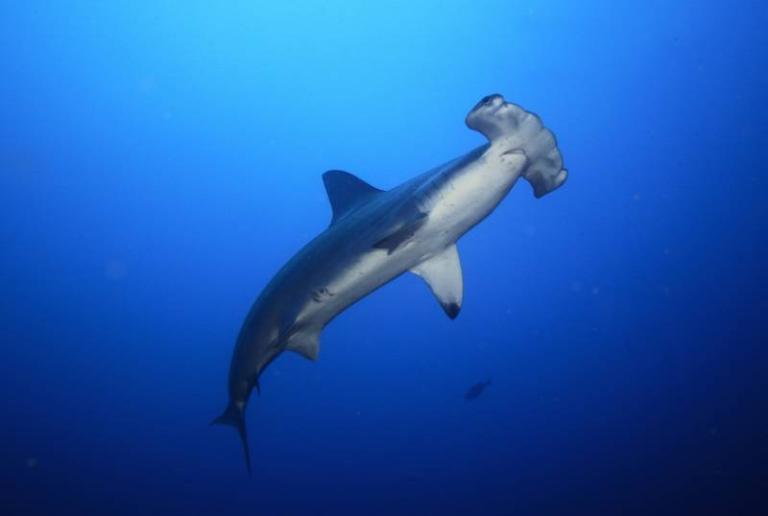
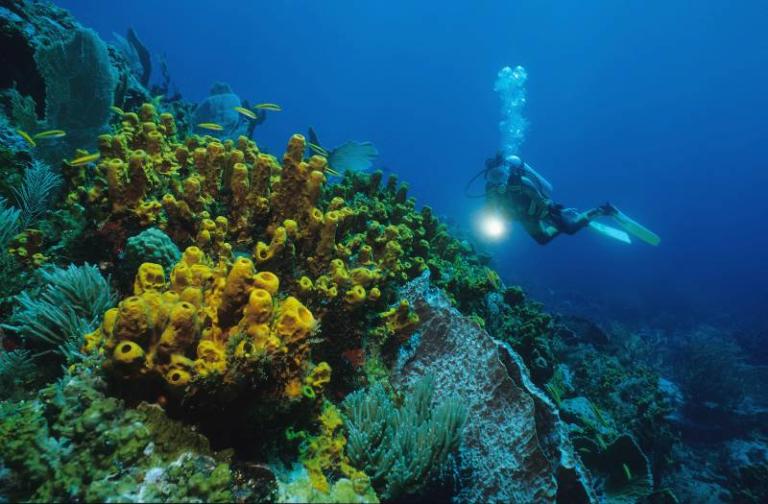
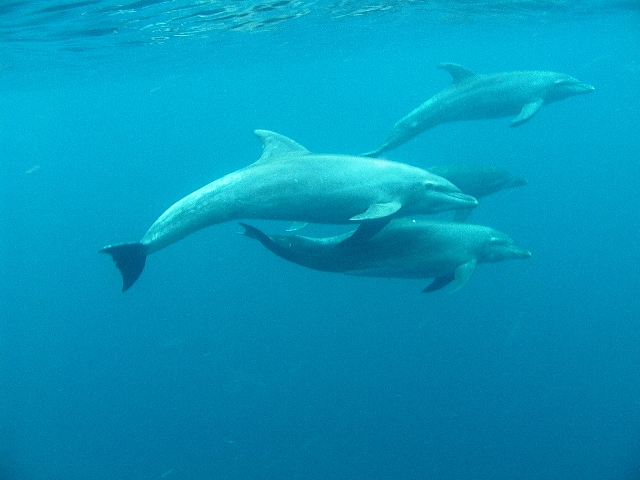
Before you get ready to jump off the dive boat, we should probably give you some background information about Tobago and mention what you might want to see and where you might like to dive first. Tobago is the small sister island in The Republic of Trinidad and Tobago. It is approximately 40km (25 miles) long and 10km (6.2 miles) wide. It’s where many from Trinidad come to take a leisure vacation as it is only 35km (22 miles) away; a twenty minute flight. We should mention that Tobago is only 80km (50 miles) from South America. In fact, most of the flora and fauna is identical to what you would expect to find in South America as a land bridge connected this region during the end of the last ice age.
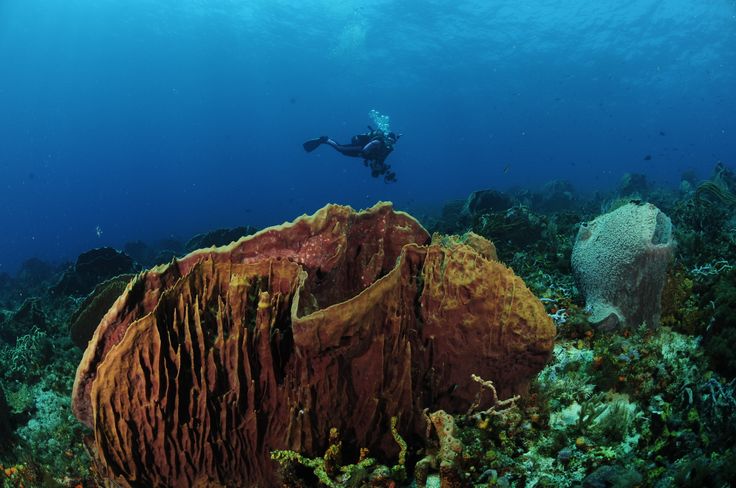
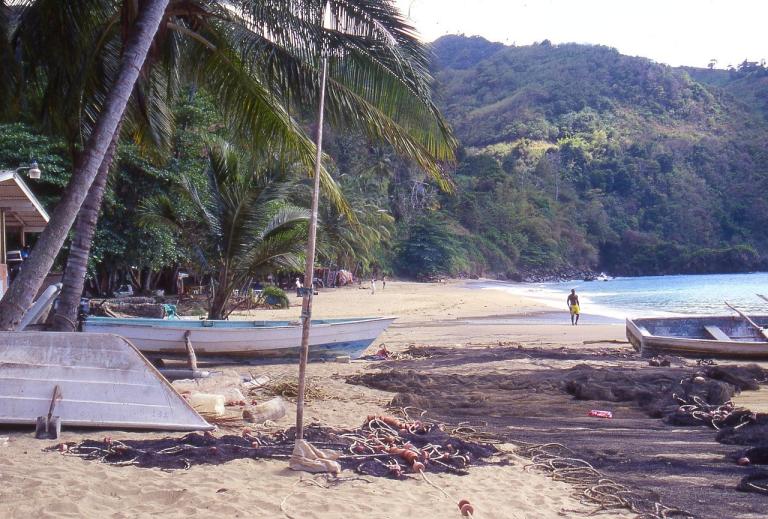
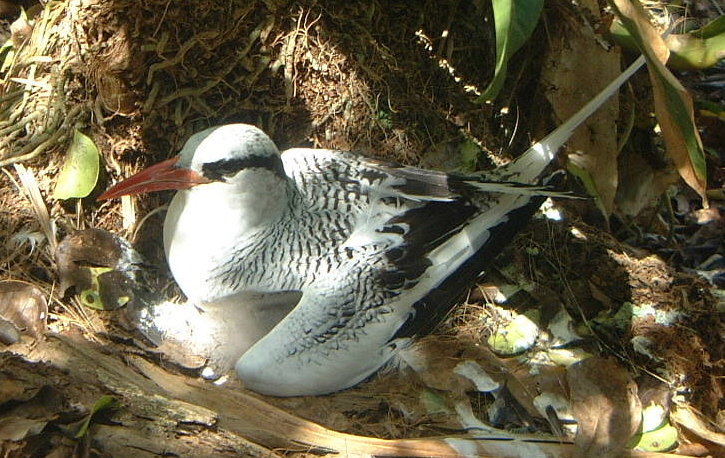
The Arawak were the first to inhabit the island and they were later replaced by the Caribs. Columbus discovered Tobago on his third voyage and soon afterwards, in what seemed at the time like an endless rotating order, the Caribs were replaced by the French, English, Dutch, Spanish, and finally by Africans and East Indian descendants. You might say Tobago has changed hands more than any other island in the Caribbean, and yet somehow, it remarkably retained one of the oldest forest reserves in the western hemisphere starting in 1776. The Main Ridge Reserve is 550m (1804 ft) high at Pigeon Point Peak near the village of Speyside. If you want to visit this protected forest and view the beautiful water falls you’ll have to hire an official Tobagonian guide. Tobago also has some small islands off its coast that have become bird havens or sanctuaries. The south end of Tobago is low lying and is home to the Robinson International Airport (TAB). You can fly nonstop into Tobago, or go “directly” through Trinidad, or you can even take the ferry service which runs from Port of Spain, Trinidad and takes 2.5 hours to reach Crown Point, Tobago.
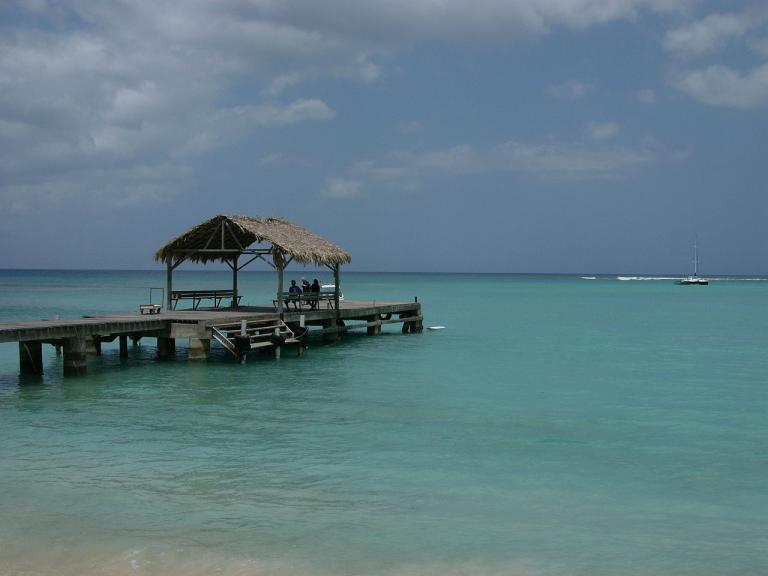
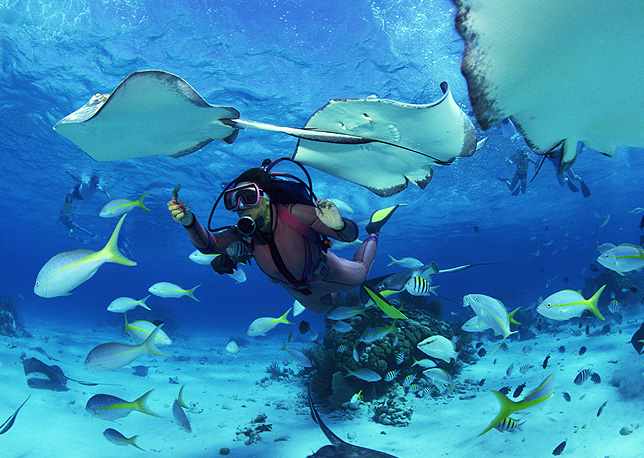
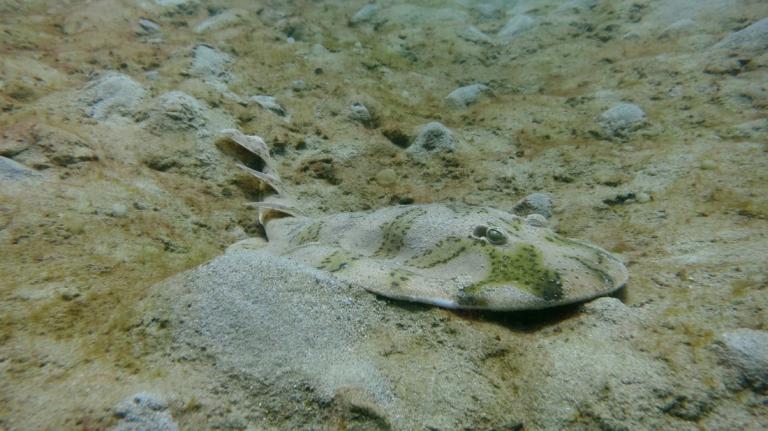
Back to diving that will excite beginners to the most experienced, 4km (2.5 miles) south of the airport are the sites of some of the most well-known drift dives near the island, and when it comes to drift dives, the name Flying Reef pretty much says it all. Here you can drift by at 0-2 knots down to 17m (58ft) of depth over the coral and past a ship’s anchor as you keep a look out for stingrays, turtles, schools of fish, nurse sharks, and passing pelagics. This dive site goes right into Sting Ray Alley where guitarfish, electric rays and more nurse sharks are usually spotted. Nearby Divers Dream is the site with overhangs for nurse sharks to the left, and a rock garden full of fish for those that dive to the right. Nearby Divers Thirst is where black tips, bull sharks and tiger sharks are spotted.
Mt Irvine Wall with is another dive destination where one dive site leads to another or is nearby. The Wall is where you may find lobsters, crab, shrimps, and sea horses, but over at the Mt Irvine Extension is where the grouper, eagle rays tarpon, cobia, and hawksbill turtles like to hang out. Rainbow Reef in the middle of the bay goes down to 21m (70ft) and is named for the rainbow runners that like to hang out around a 17th century fishing anchor.
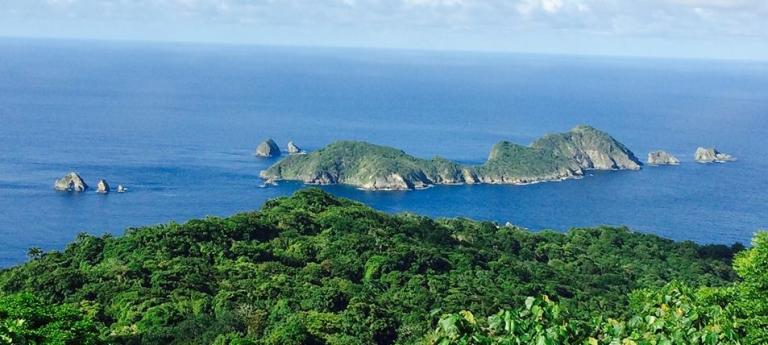
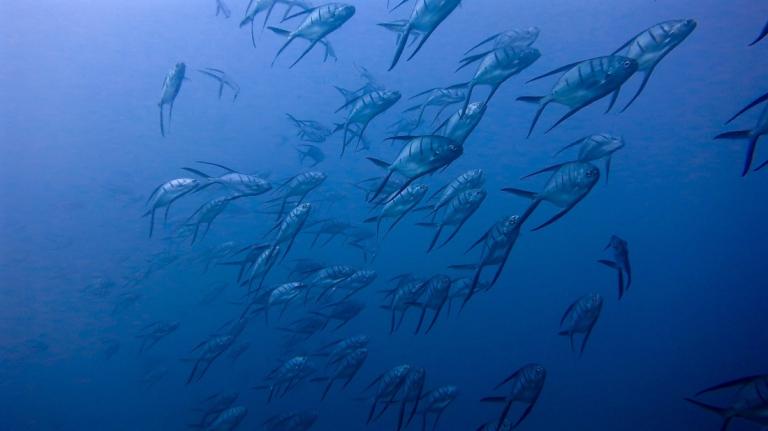
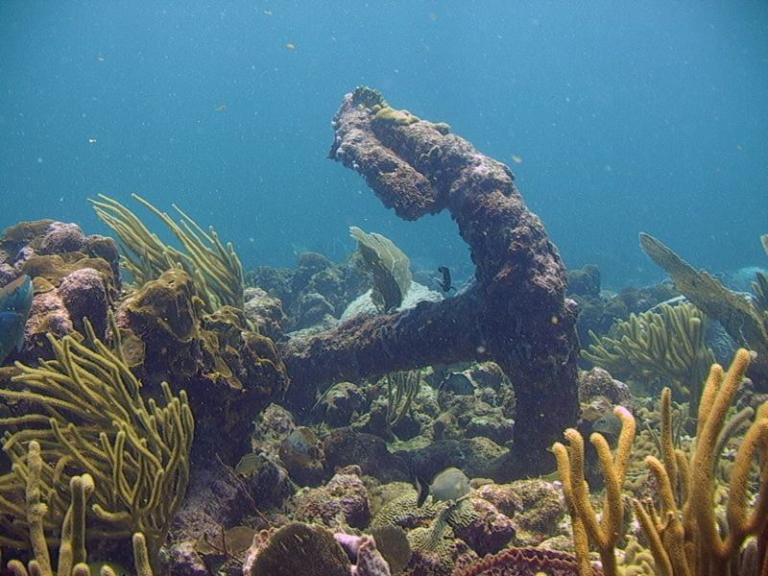
For specific fish destinations we recommend Arnos Vale, max 14m 45ft depth, which is a rock crevice nursery for all kinds of fish and is a great place for beginner divers as well as for night dives. Kelliston Drain near Goat Island and not far from Speyside, is home of the world’s largest brain coral at over 3m (10ft) high and 5.3m (16ft) wide; while not every diver is amazed by these measurements, at least the large number mantas who pass by here are impressed. The nearby Sisters are a group of five pinnacles that rise up from the deep and this is where you have a great chance to see scalloped hammer heads, especially during October to May, and whale sharks whenever they feel like it. Also close by is Japanese Gardens near Goat Island and it gets its name from all the soft corals, sea whips, and barrel sponges. This dive site flows right into the rock corridor named Kamikaze Cut. London Bridge is another popular spot when currents permit, and where water pushes you between two hard rock surfaces and empties you out into a 15m (45ft) deep area of sand. You’ll see where it got its name from before you even get close to the exposed topside rock formation. It’s a great spot to view black surgeonfish, trumpet fish, and trunk fish. Some of the more unique fish you may find around the island include: cherub angelfish, flame angelfish, angle sharks like the sand devil, and giraffe garden eels. As for wreck dives, the M.V. Maverick, 107m (350ft) long passenger and car ferry that was cleaned and opened up and made safety ready for divers before being sunk on purpose in 1997, has plenty of coral and animal life including: crabs, clams, schools of bonito and bait fish, turtles, and eagle rays.
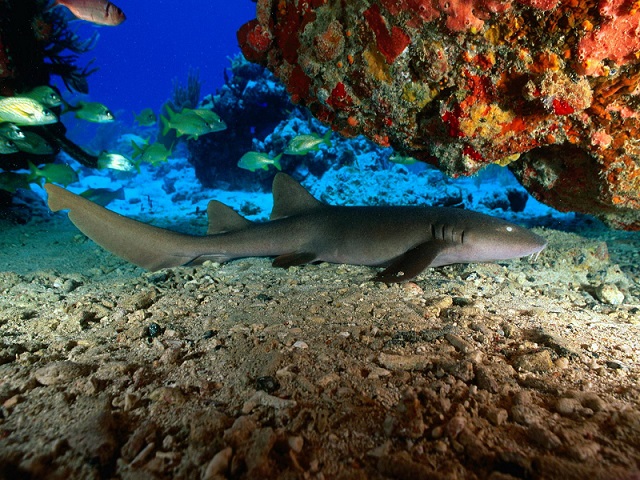
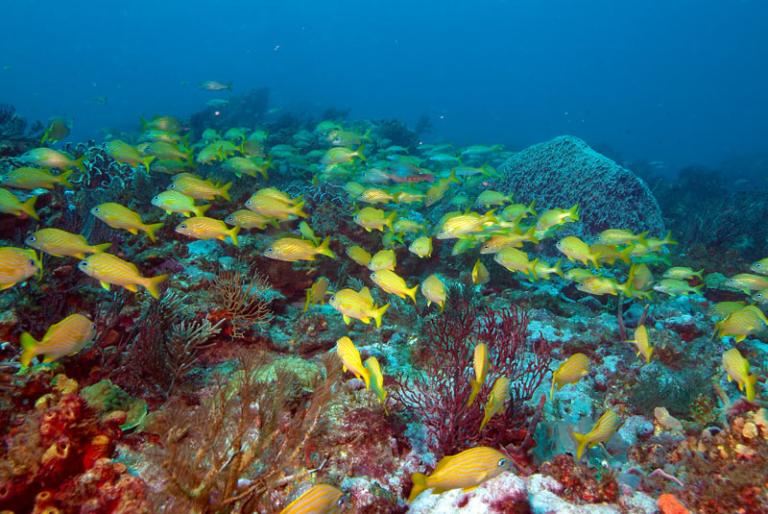
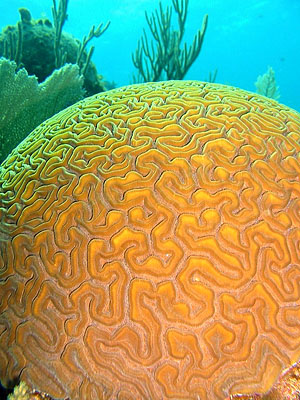
Now for adventurous divers and weather permitting, there is practically untouched diving 32-64km (20-40 miles) away at the off shore reefs. Plus, there is the wreck of the S.S. Kioto, which was sunk Sept 15, 1942 by U-boat 514. After three torpedoes, it finally sunk in 12m (40ft) of water and the scattered debris are still visible.
As you can see, Tobago is a small island, but there are more than 40 dive sites to choose from. There is also bicycling, birding, exploring the old sugar mills and plantations, visiting the 1770 Fort George, or checking out the beaches in April-July to view the leatherback turtles nesting. We didn’t even have time to point out all the beaches, but Tobago is where Disney filmed Swiss Family Robinson in 1958, so you already know that the beaches are Disney approved; even the Pirate’s Beach. There is a lot to experience, so you might not be able to fit everything in on one vacation trip, but the steel drum music bands are always playing something good, the crab and dumplings “Creole style” are simmering in the pot, and to make Tobago’s sunsets complete, the island just needs you.
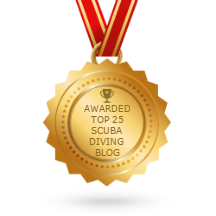
Recent Posts
- Eastern Malaysia, Sabah, Sipadan & More
- Ghost Pipefish, Pipefish, Seahorses, and Sea Dragons
- Australia Queensland and the Great Barrier Reef
- Tioman Islands, Malaysia
- The Riviera Maya
- The Peter Diving System
- The Bay Islands, Roatan, Utila, Guanaja, and more.
- The Cuttlefish; The Undisputed Master of Camouflage.
- The Maldives: A Garland of Islands in the Indian Ocean
- Frogfish, The Overlooked Camouflage Artist
Categories
- Australia
- Bahamas
- Bay Islands
- Belize
- Blue Hole
- Bonaire Diving
- Borneo
- Cayman Brac
- Cayman Islands
- Cozumel
- Curacao
- Cuttlefish
- Dive Destinations
- Dive Equipment
- Dive Liveaboards
- Dive Resorts / Properties
- Dive Travel
- Dive Travel Deals
- Diver Wellness
- Dolphins
- Dominica
- Eagle Rays
- eagle rays
- Family Travel
- Fiji
- Galapagos Islands
- Great White Shark cage diving
- Guanaja
- Honduras
- Indonesia
- Infographics
- Isla Mujeres
- Learning to Dive
- Little Cayman
- Maduro Dive Newsletter
- Malaysia
- Maldives
- Manta Rays
- Marine Life
- Mexico
- Micronesia
- Muck Diving
- Myamar
- Palau
- Papua New Guinea
- Pelagics
- Philippines
- Pinnacles
- Polynesia
- Reefs
- Riviera Maya
- Roatan
- Saba
- Sabah
- Scuba Diving
- Scuba Gear Reviews
- Scuba News/Events
- Scuba Training & Education
- Sea Legends
- sea lions
- Sea of Cortez
- Sharks
- Single Travel
- Sipadan
- Socorro Islands
- South Africa
- Specialties
- ST. Kitts
- Stingrays
- Tahiti
- Thailand
- The Bucket List
- Tobago
- Truk Lagoon (Chuuk)
- Turks and Caicos Islands
- Turtles
- Uncategorized
- Underwater Photography
- Underwater Video
- Utila
- Walls
- Whale Sharks
- Whales
- Wreck Diving
- Wrecks
- Yap
Archives
- January 2024
- April 2023
- March 2020
- March 2019
- January 2019
- November 2018
- September 2018
- July 2018
- May 2018
- March 2018
- January 2018
- October 2017
- September 2017
- June 2017
- April 2017
- February 2017
- January 2017
- October 2016
- August 2016
- July 2016
- May 2016
- March 2016
- February 2016
- January 2016
- December 2015
- August 2015
- June 2015
- April 2015
- January 2015
- November 2014
- July 2014
- April 2014
- February 2014
- December 2013
- November 2013
- October 2013
- September 2013
- August 2013
- July 2013
- June 2013
- May 2013
- April 2013
- March 2013
- February 2013
- January 2013
- December 2012
- November 2012
- October 2012
- September 2012
- August 2012
- July 2012
- June 2012
- May 2012
- April 2012
